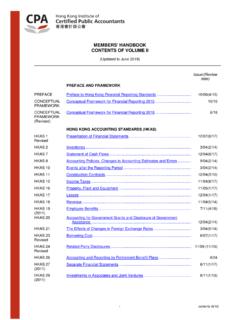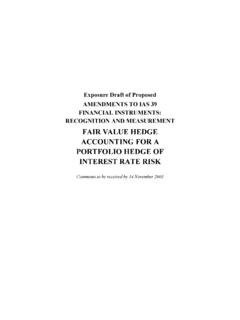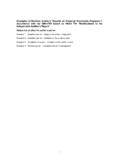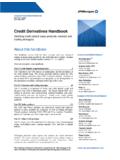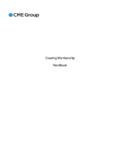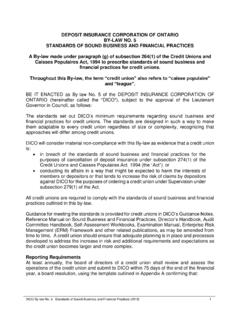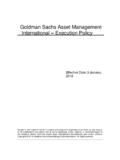Transcription of Hong Kong Financial Reporting Standard 9
1 HKFRS 9. Revised December 2011 September 2014. hong kong Financial Reporting Standard 9. Financial Instruments OPERATING SEGMENTS. COPYRIGHT. Copyright 2009 hong kong Institute of Certified Public Accountants This hong kong Financial Reporting Standard contains IFRS Foundation copyright material. Reproduction within hong kong in unaltered form (retaining this notice) is permitted for personal and non-commercial use subject to the inclusion of an acknowledgment of the source. Requests and inquiries concerning reproduction and rights for commercial purposes within hong kong should be addressed to the Director, Operation and Finance, hong kong Institute of Certified Public Accountants, 37/F., Wu Chung House, 213 Queen's Road East, Wanchai, hong kong . All rights in this material outside of hong kong are reserved by IFRS Foundation.
2 Reproduction of hong kong Financial Reporting standards outside of hong kong in unaltered form (retaining this notice) is permitted for personal and non-commercial use only. Further information and requests for authorisation to reproduce for commercial purposes outside hong kong should be addressed to the IFRS Foundation at Copyright 2 HKFRS 9. Financial INSTRUMENTS. CONTENTS. paragraphs INTRODUCTION. hong kong Financial Reporting Standard 9. Financial INSTRUMENTS. CHAPTERS. 1 OBJECTIVE 2 SCOPE 3 RECOGNITION AND DERECOGNITION 4 CLASSIFICATION 5 MEASUREMENT 6 HEDGE ACCOUNTING not used 7 EFFECTIVE DATE AND TRANSITION APPENDICES. A Defined terms B Application guidance C Amendments to other HKFRSs D Comparison with International Financial Reporting standards E Amendments to HKFRS 9 Financial Instruments and HKFRS 7 Financial Instruments: Disclosures Mandatory Effective Date of HKFRS 9 and Transition Disclosures BASIS FOR CONCLUSIONS (see separate booklet).
3 APPENDIX. Amendments to the Basis for Conclusions on other HKFRSs DISSENTING OPINIONS. IMPLEMENTATION GUIDANCE (see separate booklet). APPENDIX. Amendments to the guidance on other HKFRSs hong kong Financial Reporting Standard 9 Financial Instruments (HKFRS 9) is set out in paragraphs and Appendices A C and E. All the paragraphs have equal authority. Paragraphs in bold type state the main principles. Terms defined in Appendix A are in italics the first time they appear in the HKFRS. HKFRS 9 should be read in the context of its objective and the Basis for Conclusions, the Preface to hong kong Financial Reporting standards and the Framework for the Preparation and Presentation of Financial Statements. HKAS 8 Accounting Policies, Changes in Accounting Estimates and Errors provides a basis for selecting and applying accounting policies in the absence of explicit guidance.
4 Copyright 3 HKFRS 9 (December 2011). Financial INSTRUMENTS. Introduction Reasons for issuing the HKFRS. IN1 The objective of hong kong Institute of Certified Public Accountants (HKICPA) issuing HKFRS 9 is to maintain international convergence with the International Accounting standards Board (IASB) further to its issuance of IFRS 9. IN2 HKAS 39 Financial Instruments: Recognition and Measurement sets out the requirements for recognising and measuring Financial assets, Financial liabilities and some contracts to buy or sell non- Financial items. Many users of Financial statements and other interested parties have expressed that the requirements in HKAS 39 are difficult to understand, apply and interpret. They have urged the development of a new Standard for Financial Reporting for Financial instruments that is principle-based and less complex.
5 Although HKAS 39 has been amended several times to clarify requirements, add guidance and eliminate internal inconsistencies, it has not previously undertaken a fundamental reconsideration of Reporting for Financial instruments. IN3 Since 2005, the IASB and the US Financial Accounting standards Board (FASB) have had a long-term objective to improve and simplify the Reporting for Financial instruments. This work resulted in the publication of a discussion paper, Reducing Complexity in Reporting Financial Instruments, in March 2008. Focusing on the measurement of Financial instruments and hedge accounting, the paper identified several possible approaches for improving and simplifying the accounting for Financial instruments. The responses to the paper indicated support for a significant change in the requirements for Reporting Financial instruments.
6 In November 2008 the IASB added this project to its active agenda, and in December 2008 the FASB also added the project to its agenda. IN4 In April 2009, in response to the input received on its work responding to the Financial crisis, and following the conclusions of the G20 leaders and the recommendations of international bodies such as the Financial Stability Board, the IASB announced an accelerated timetable for replacing IAS 39. As a result, in July 2009 the IASB published an exposure draft Financial Instruments: Classification and Measurement, followed by IFRS 9 Financial Instruments in November 2009. Approach to replacing HKAS 39. IN5 It is intended that HKFRS 9 will ultimately replace HKAS 39 in its entirety. However, in response to requests from interested parties that the accounting for Financial instruments should be improved quickly, the project to replace HKAS 39 is divided into three main phases.
7 As each phase is completed, the relevant portions of HKAS 39 will be deleted and chapters in HKFRS 9 will be created to replace the requirements in HKAS 39. IN6 The three main phases of the project to replace HKAS 39 are: (a) Phase 1: Classification and measurement of Financial assets and Financial liabilities. In November 2009 the chapters of HKFRS 9 relating to the classification and measurement of Financial assets were issued. Those chapters require all Financial assets to be classified on the basis of the entity's business model for managing the Financial assets and the contractual cash flow characteristics of the Financial asset. Assets are initially measured at fair value plus, in the case of a Financial asset not at fair value through profit or loss, particular transaction costs. Assets are subsequently measured at amortised cost or fair value.
8 In November 2010 the requirements related to the classification and measurement of Financial liabilities were added to HKFRS 9. Those additional requirements are described further in paragraph IN7. Copyright 4 HKFRS 9. Financial INSTRUMENTS. (b) Phase 2: Impairment methodology. In June 2009 the IASB published a Request for Information on the feasibility of an expected loss model for the impairment of Financial assets. This formed the basis of an exposure draft, Financial Instruments: Amortised Cost and Impairment, published in November 2009. The IASB also set up a panel of credit and risk experts to consider and advise on the operational issues arising from an expected cash flow approach. The IASB is redeliberating the proposals in the exposure draft to address the comments received from respondents, and suggestions from the expert advisory panel and other outreach activities.
9 (c) Phase 3: Hedge accounting. The IASB is considering how to improve and simplify the hedge accounting requirements of IAS 39. It expects to publish proposals for a comprehensive new approach before the end of 2010. IN7 In November 2010 the requirements for classification and measurement of Financial liabilities were added to HKFRS 9: (a) Most of the requirements in HKAS 39 for classification and measurement of Financial liabilities were carried forward unchanged to HKFRS 9. Under HKAS 39 most liabilities were subsequently measured at amortised cost or bifurcated into a host, which is measured at amortised cost, and an embedded derivative, which is measured at fair value. Liabilities that are held for trading (including all derivative liabilities) were measured at fair value. Although a symmetrical approach for Financial assets and Financial liabilities had been proposed in the exposure draft published in 2009, it is decided to retain most of the requirements in HKAS 39 for classifying and measuring Financial liabilities because constituents told that those requirements were working well in practice.
10 Consistently with its objective to replace HKAS 39 in its entirety, those requirements from HKAS 39 are relocated to HKFRS 9. (b) Consistently with the requirements in HKFRS 9 for investments in unquoted equity instruments (and derivative assets linked to those investments), the exception from fair value measurement was eliminated for derivative liabilities that are linked to and must be settled by delivery of an unquoted equity instrument. Under HKAS 39, if those derivatives were not reliably measurable, they were required to be measured at cost. HKFRS 9 requires them to be measured at fair value. (c) The requirements related to the fair value option for Financial liabilities were changed to address own credit risk. Those improvements respond to consistent feedback from users of Financial statements and others that the effects of changes in a liability's credit risk ought not to affect profit or loss unless the liability is held for trading.
